Photographer Profile - Arthur Drooker: "All conventions satisfy a basic human urge: the longing for belonging."
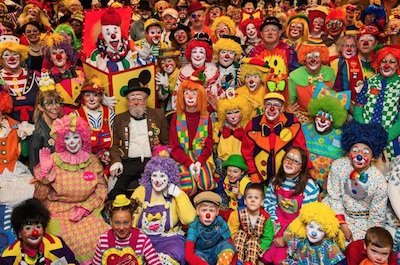
|
|
|
By 2012, 4,000 people attended the gathering for fans of the animated television series My Little Pony: Friendship is Magic. The 2015 convention attracted more than 10,000 of the show’s most ardent admirers — not the young girls that the My Little Pony franchise was originally aimed at, but young men, typically in their early 20s, who have become enchanted by a recently revamped version of the show. The call themselves bronies.
“This fascinated me,” says photographer Arthur Drooker.
Drooker attended his first BronyCon in 2013. He wasn’t entirely sure what he would find, but, he says, the idea of thousands of men dressed in My Little Pony costumes sounded like a pretty sure bet, photographically speaking.
Likewise, when he photographed his first convention — a 2013 meeting of Abraham Lincoln impersonators — he anticipated a rich visual experience. “I imagined all these people with different backgrounds and real jobs as teachers and contractors getting together and dressing like Lincoln,” he says, “and I thought, what does that look like? I had to see for myself.”
Over the next three years he went on to photograph gatherings of clowns, taxidermists, military history aficionados, ventriloquists, furries, fetishists and other groups for a project he called “Conventional Wisdom.” It’s an apt title, because along with pictures, Drooker came back from the events with a deeper understanding of modern human social patterns.
“BronyCon is a good example of why these groups get together,” he says. “You have individuals who might be shy or fearful that their friends and family will think their big passion is outside the mainstream, so they go online and find out that they’re not alone,” he says. “But what happens then, and it’s very interesting, is that connecting virtually is not enough. They need to be physically together in a brick-and-mortar space.”
Once there, it doesn’t matter what outsiders think.
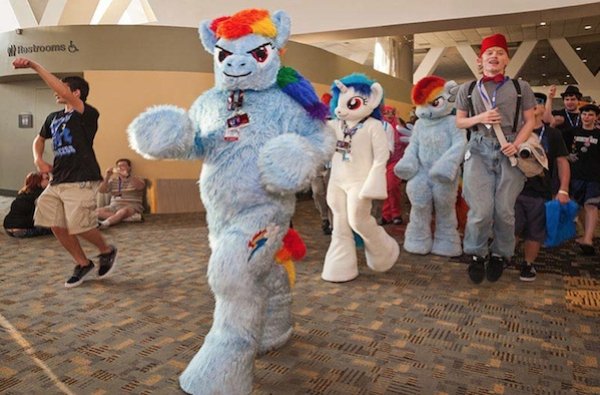
While shooting at BronyCon, Drooker met a group of psychologists working on the Brony Study, a long-term research project exploring why young adult males have made My Little Pony the center of their lives. “One of them had a son who is a brony, and he told me that these young men look to My Little Pony for socialization guidance and cues,” Drooker says. “To the untutored eye, what these guys are doing may look childish, but when you look at it closely, there’s a lot of joy there, there’s a lot of bonding.”
In an important way, Bronies, Drooker learned, are much like everyone else.
“They feel about their passion the way I feel about the Boston Red Sox,” he says, “and what they get from going to their convention and being with people sharing their passion is what I get from going to Fenway Park and being with 36,000 Red Sox fans.”
Visual Cornucopia
Drooker’s convention photographs are now collected in a book, also called Conventional Wisdom, along with interviews he conducted with the people he met. “The wisdom I've gained from this project has shown me that regardless of what they're about, where they're held or who attends them, all conventions satisfy a basic human urge: the longing for belonging,” he writes in an artist's statement.
Drooker stumbled onto his first convention — the Lincoln impersonators — by accident. He had been thinking about starting a series on historical military reenactors, groups he’d come to know in his previous career as a freelance writer, producer and director for History Channel television shows. That changed when he came across the Association of Lincoln Presenters online.
“It’s group of people who admire Lincoln and dress up like him and appear at schools and libraries and other events,” Drooker says. “When I went to their website, I saw they were promoting their upcoming convention. And I thought, wow, that could be interesting.”
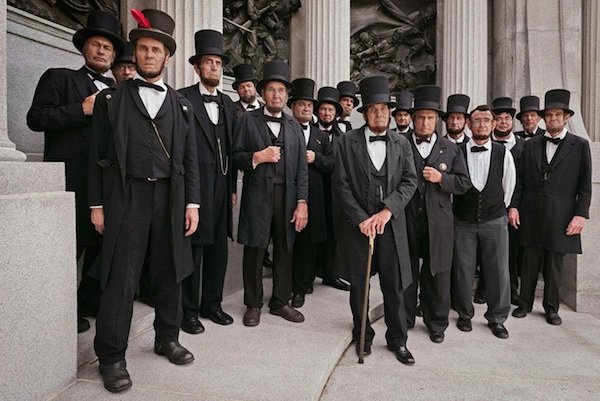
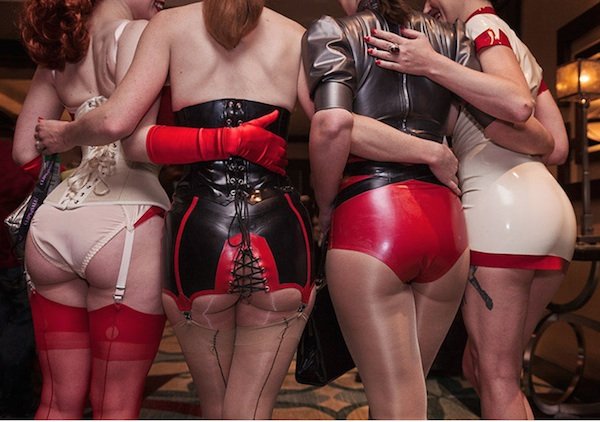
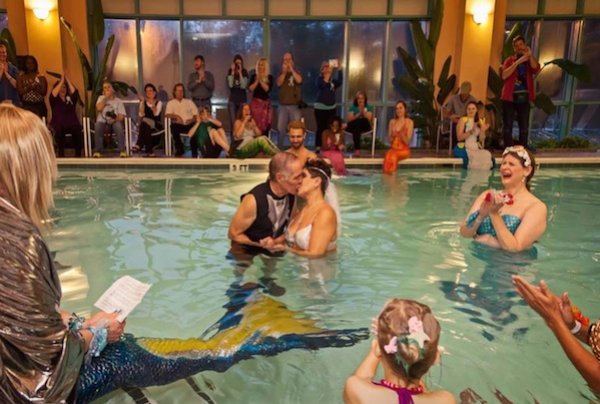
He found other gatherings — Fetishcon, the World Taxidermy Championships, the World Clown Association convention, the Military History Fest — online and by word of mouth. He attended most of the conventions twice, and in the case of the Lincoln Presenters three times. The entire series was shot with a single Canon 5D Mark II DSLR and 24-105mm lens.
“I wanted to travel super light because I was shooting portraits on the run,” Drooker says. “I was an outsider at these events, and most of the people I shot were doing me a favor by taking time to let me photograph them. But let’s face it, a lot of the people I ended up shooting are exhibitionists, so we had a symbiotic relationship.”
That was particularly true at Fetishcon, he says. “When you go and you’re not a diehard member of the community, the first few minutes you’re there you’re going, whoa, because you’re seeing some unusual stuff,” he says. “It’s a visual cornucopia. But after 15 minutes or so, you get used to what’s going on.”
Outsiders and Insiders
At the heart of Drooker’s project are the twin notions of inclusivity and exclusivity. The opportunity to be part of something and part of a community — an insider — makes the conventions powerful experiences for the people who go to them. Drooker, an outsider, says he often felt lure of belonging himself.
“There’s a buzz to the events, you can sense it,” he says. “As a photographer, you want to be an observer, but it’s hard not to be sucked in to some extent and feel the vibe. I’m not going to lie: A part of me liked going to these conventions because I wanted to feel that buzz.”
Drooker’s previous book, 2015’s Pie Town Revisited, was also about a community, though one of a different nature. A remote and dusty village in New Mexico with a population of perhaps 70, Pie Town was a destination Drooker had long wanted to see: In 1940, the Farm Security Administration photographer Russell Lee had passed through and famously documented the place. Photographing the town as it looked now, and showing his pictures alongside Lee’s, was a way for Drooker to place himself within the history of documentary photography.
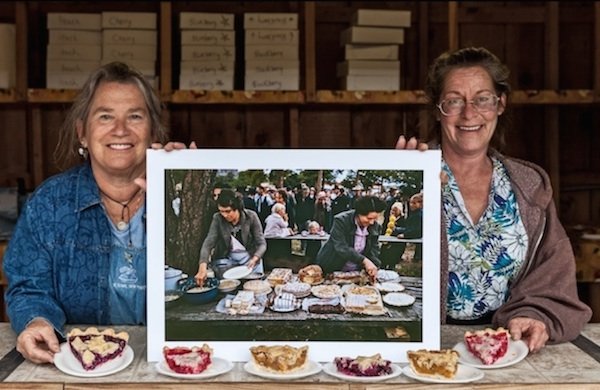
That idea went back a way. Drooker got his first camera, a Kodak Retina, as a teenager in the Bronx, and a lasting bond was forged. “I just started walking around my neighborhood taking photos,” he says. “I was putting four borders around anything I wanted to, and I found that thrilling and empowering. I discovered the work of FSA photographers like Russell Lee and Dorothea Lange, and I promised myself then that I would revisit a place that an FSA photographer had been to.”
First, though, he studied history in college and launched his career in television. “And then when I turned 50, I did the involuntary life review,” he says. “I realized quite easily that it was photography that I really loved, so I rededicated my life to it.”
At this point you may be wondering how a boy from the Bronx became a Red Sox fan. The best answer is: It happens, the way other people become obsessed by Abraham Lincoln and My Little Pony. There is no accounting for taste.
“It’s like falling in love.” Drooker says. “You can explain it to a certain point, and after that there are no words for it.”



